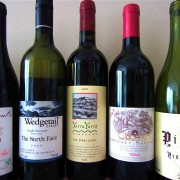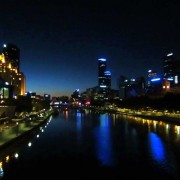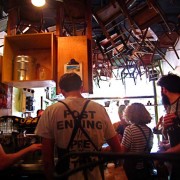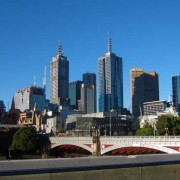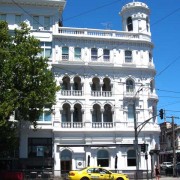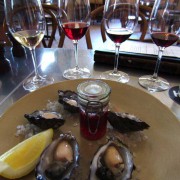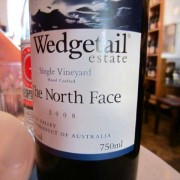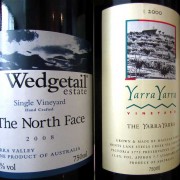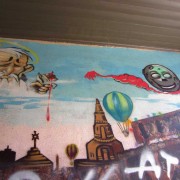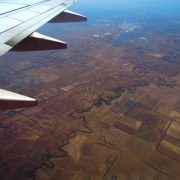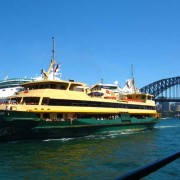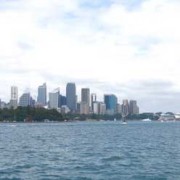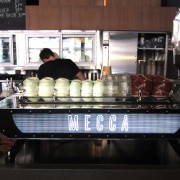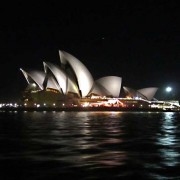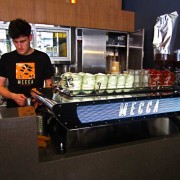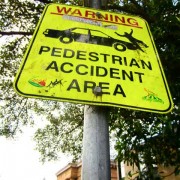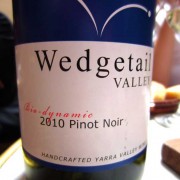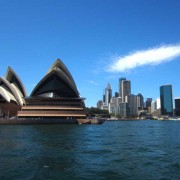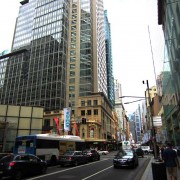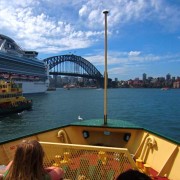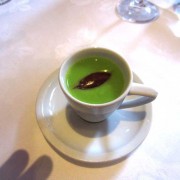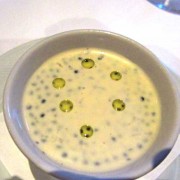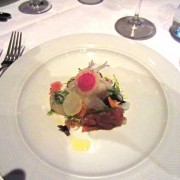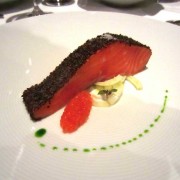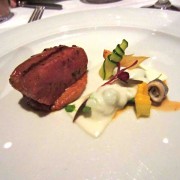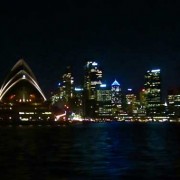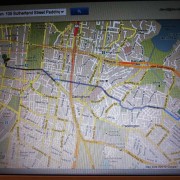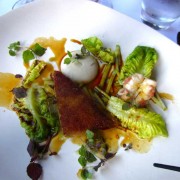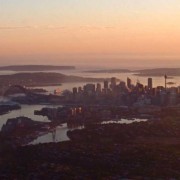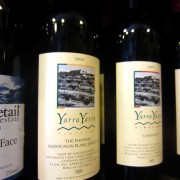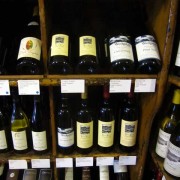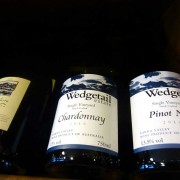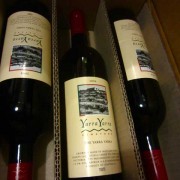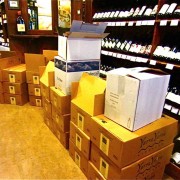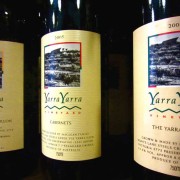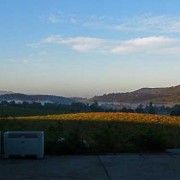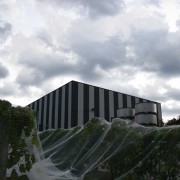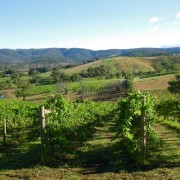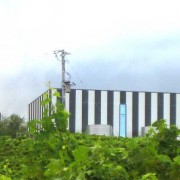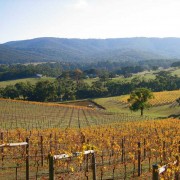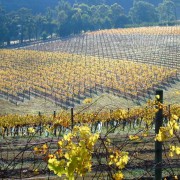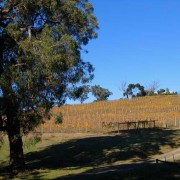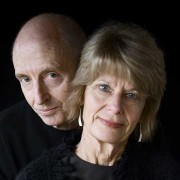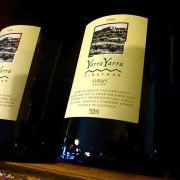Have we somehow entered a parallel universe? Have we fallen into a wormhole? We really had no intention of starting with Australian wine just yet, but we simply couldn’t stop ourselves. Many know us as strictly northern hemisphere but a couple of bottles on David’s trip to see his Aunt down-under a year ago were impossible to ignore.
Circular Quay in Sydney may be touristy but at the far eastern end is the Australian Wine Centre, an excellent place to get to know some of Australia’s top bottles. In amongst the Grange, Henschke, Giaconda, Mount Mary and Moss Wood was a remarkable bottle of The Yarra Yarra 2000 which instantly reset the benchmark very, very high.
A few days in Melbourne took us to the Gertrude St Vinoteca. The very knowledgeable and helpful Jacs (Jaqueline Turner, who was already familiar with The Winery and what we do from an earlier visit to London), steered us to a shortlist that included a bottle of Wedgetail North Face – wine that our colleague Dan was later to describe as “it has something of that sunblush tomato thing going on”.
It has taken a year (with over two months on the high seas) to get them to London. They are here and feature proudly on our shelves. We love them.
Yarra Yarra (Yarra Valley)
Remember a time in Bordeaux before star Consultants? Shall we call it BC, just for fun? Here’s a wine from the other side of the world, from the Yarra Valley, northeast of Melbourne, informed by classic Bordeaux from the 1950s, 60s and 70s – before extraction, before 200% new oak. Despite the valley being cooler than Bordeaux, it seems to have the ripeness of a hotter Australian summer (but then, so does Bordeaux of recent decades). The difference is its purpose. This is a wine true to its original intention, its original mission. Not pandering to markets, fashion, brand awareness or chasing luxury dollars. That’s not to say it’s inexpensive – something made without compromise, on this small scale (1,500-2,000 cases a year), can never be cheap. But, it is wine utterly true to itself. Compelling, interesting, pure, unmessed-with. Complete. It’s what we always look for and we are excited (and at the same time a bit humbled) to have found it.
How did we stumble upon it? We found The Yarra Yarra 2000 in the Australian Wine Centre at Sydney’s Circular Quay. It was the last bottle. We were getting orientated, getting up-to-speed with Australia’s finest – Giaconda, Mount Mary, Moss Wood, Picardy, Henschke. The bottle was a revelation. “I think we’ve found Aussie Dunn” said our colleague David. Those of you familiar with the top shelf of our Californian range will know how much we like Dunn.
We found The Phoenix Sauvignon Blanc Semillon 2009 in Melbourne on Restaurant Pei Modern’s winelist. Our knowledgeable waitress had the story. The Black Saturday Bushfires of February 7th 2009 destroyed a swathe of Yarra Yarra’s vines and the cellar. The wine was vinified at a neighbour’s. Hence, its appropriate name: “The Phoenix”. It was an impressive, complex, oily, layered wine – reminiscent of the great Bordeaux whites, Domaine de Chevalier, Haut Brion even.
Ian Maclean attended a wine tasting in 1974. Michael Broadbent was showing Bordeaux first growths. It turned out to be a life changing moment. In 1977 Ian and his wife Anne bought a site at Steel’s Creek at the north end of Yarra Valley and planted a couple of hectares of classic Bordeaux varietals. Twenty years later in 1996-1997 they planted more, this time including a hectare of Syrah. By 2002 they were also planting a little Viognier to add some northern Rhone fragrance to the Syrah.
A year on and after two months crossing oceans, we have Yarra Yarra’s wonderful wines on our shelves; Sauvignon Blanc Semillon, Cabernets, Syrah Viognier and The Yarra Yarra.
Wedgetail (Yarra Valley)
We were sitting in the Gertrude Street Enoteca in Melbourne and, despite being 38C outside, we fancied trying some Yarra Valley Cabernet. The very helpful and knowledgeable Jaqueline Turner (aka Jacs) steered us towards Wedgetail’s North Face. It was delicious – a lush, juicy, herbal, blackcurrant pastille Cab Merlot blend which our colleague Dan was later to describe it as “sun blush tomato”. Enthusiastic calls were made. Although Mr Wedgetail, a French-Canadian named Guy Lamothe, was in Paris while we were downunder, it didn’t stop us tasting wherever we could. Single Vineyard Chardonnay and Single Vineyard Pinot Noir – cool and understated.
Guy was born in Quebec and migrated to Australia in the late 1970s. He had always loved Pinot Noir. “There was an aura of romanticism around Pinot Noir 25 or 30 years ago. It was impossible to find Australian Pinot back then. Well, you could, but it cost an absolute fortune. We would buy Georges Duboeuf Beaujolais – it was the only affordable light red.”
He worked part time in wineries and in 1994, with Dena, the woman from Essex who was to become his wife, bought the property that was to become Wedgetail. “There was nothing here. We planted everything from scratch.”
Guy started a correspondence course in winemaking at Charles Sturt University and did an internship at Jacques Prieur in Meursault. He loved the small scale of Burgundy, the one man or small family operations.
“I hate heat in wine. I don’t like anything over 13%.” Most of Guy’s wines are closer to 12.5% – rare in Australia now. How do you keep the alcohol levels so low? “Pick early. I taste the grapes and as soon as the pips are ripe, they are ready to pick.”
North Face is from a warm, north facing slope. His Chardonnay comes from the cooler, south facing slope directly opposite. His Pinot Noir vineyard is east facing.
“We don’t shout about it but our general, day to day practice is organic. Occasionally, if we’re about to lose the whole crop, we have to break from it – like in 2012, when we had to use conventional fungicide.” And biodynamics? Yes, but…“we have been in drought here for so long, pretty much constantly since 1997, that we have to get the materials sent from the Biodynamic Society. There is no local cow poo.” (Cow dung is necessary for a number of biodynamic preparations).
Doesn’t the extreme weather and drought affect the way the wines taste? “Not as much as you might think. As long as you pick early, you get small berries, small crops, lower alcohol and amazing concentration.”

